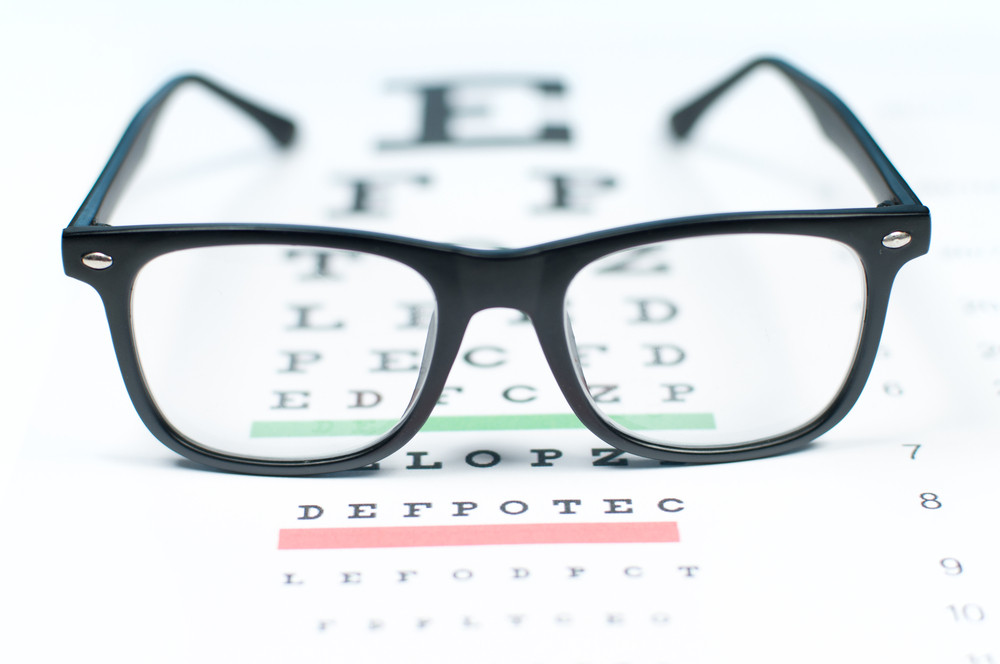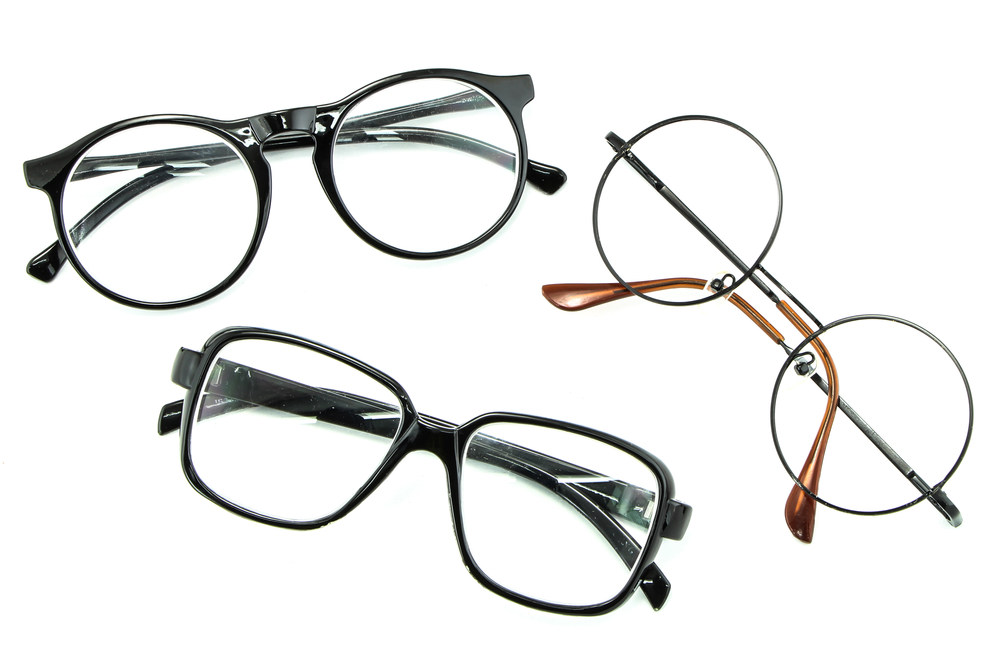How Do I Choose the Right Prescription Lenses?
Have you ever felt overwhelmed by the range of choices when it comes to purchasing prescription lenses? Well you’re not alone. There’s a lot to consider.
That’s why I’ve decided to shed some light on our prescription lens offerings at Martin’s Eyecare, ensuring your selection suits your needs, and provides a top notch vision experience.
What is a Prescription Index?
Lens indexes refer to how thick or thin a lens is. Imagine lenses as sheets of paper: a higher index is like a thinner sheet, while a lower index is thicker.
The “index” number gives an idea of how efficiently the lens bends light. So, when you hear about a higher index, it means the lens is thinner but still offers the same vision correction as a thicker one.
This is particularly helpful for people with stronger prescriptions because nobody wants to wear bulky, “coke bottle” glasses. The most common range of indexes you’ll come across when shopping for glasses falls between 1.5 (standard thickness) and 1.74 (ultra-thin).
Your optometrist can help you find your correct prescription index/s through a routine eye examination.


The Different Types of Prescription Lenses
The best type of lens for you will depend on your visual needs. From reading your favorite book to enjoying the distant view of Hobart’s Mount Wellington, the right lens can enhance every experience.
- Single Vision Lens: Perfect for those who need a focused prescription for a specific task. Ideal for reading, driving, or computer work. This is the most common type of lens prescribed by optometrists.
- Bifocal Lens: As the name suggests, this is a lens for dual purposes. Whether you’re doing a crossword or viewing a breathtaking sunrise across the Derwent River, this lens adjusts to both near and far, making transitions effortless.
- Multifocal (Progressives) Lens: Think of it as a symphony for your eyes. Three distinct areas of focus – distance, mid-range, and up close – ensure a fluid visual transition without any jarring lines. It’s like having multiple glasses in one sleek design.
- Free Form Multifocal Lens: Cutting-edge and versatile. With a design that reduces distortions by 40%, you experience a more natural view, and the 30% wider visual fields mean your eyes roam free, capturing every detail.
Choosing the right prescription lens is a bit like selecting the perfect pair of shoes; it all depends on when, where and why you plan on using them.
Material Properties of Prescription Lenses
Selecting the right lens material is another important decision. Lenses can come in either glass or plastic.
Glass lenses provide the clearest vision with the smallest amount of distortion. Glass lenses are also more resistant to scratches than plastic lenses. However, glass lenses create more limitations on your choice of frame types, since they are incompatible with rimless and semi-rimless frames.
Plastic lenses are the more popular choice these days. Plastic is more durable, and resistant to breakage than glass lenses, an important consideration especially for kids eyeglasses. Plastic is generally more lightweight and less likely to have issues with glare, since it is inherently less reflective than glass.
At Martin’s Eyecare we regularly sell the following prescription lenses.
- CR39: The standard bearer. A reliable and sturdy plastic lens that’s stood the test of time.
- 1.56 Index: A leap in lens evolution. It’s sleeker by being 20% thinner, significantly lighter on your nose, and offers 100% protection against harsh UV rays, ensuring your eyes remain shielded and relaxed.
- 1.59 Polycarbonate: Durability meets flexibility. However, while they’re loved for their resilience, there might be the slightest hint of distortion in certain conditions.
- 1.53 Trilogy: Our premium selection for those chic rimless or semi-rimless frames. Not just style, they promise enhanced strength, surpassing Polycarbonate, and serving a crystal-clear visual treat.
- High Index Lenses (1.61, 1.67 & 1.74): For those who prefer feather-light eyewear without compromising on strength. They’re refined, slim, and subtle.
- Transitions: The world-changers. Adapting to your environment, these lenses ensure optimal tint outdoors and crystal-clear vision indoors. The bonus? Full protection against UV rays, caring for your eyes in every light.
- Nupolar: Sunglasses with a twist! These fully polarized lenses not only reduce glare but also come in a plethora of shades to match your style, ensuring every sunny day out is comfortable.
- Drivewear: The road-trip buddy! Designed uniquely for drivers, they protect against harsh glares and adapt even behind car windshields, promising a safe and comfortable drive.
From standard CR39 to the advanced Drivewear, each material is engineered for particular scenarios and wearers. It’s about clarity, comfort, and durability. Ensure your lenses align with both your vision needs and lifestyle demands.
What is an Abbe Index?
The Abbe index is like a rating for how well a lens can handle colors without spreading them out too much. Imagine shining a flashlight through a prism and seeing a rainbow on the other side. If the colors in that rainbow are widely spread out, it means the prism—or in this case, the lens—has a low Abbe value. A higher Abbe value means the colors stay closer together, leading to clearer vision without weird color fringes on the edges of things, especially in bright light.
When choosing prescription lenses, you might want to consider lenses with a higher Abbe value. These lenses can provide clearer and sharper vision without those distracting color distortions.
This table provides a guide on how lens materials match up with indexes and Abbe values.
| MATERIAL | INDEX | ABBE VALUE |
| Crown Glass | 1.523 | 59 |
| High Index Glass | 1.60 | 42 |
| High Index Glass | 1.70 | 39 |
| Plastic CR-39 | 1.49 | 58 |
| Mid Index Plastic | 1.54 | 47 |
| Mid Index Plastic | 1.56 | 36 |
| High Index Plastic | 1.60 | 36 |
| High Index Plastic | 1.66 | 32 |
| Trivex | 1.53 | 43 |
| Polycarbonate | 1.58 | 30 |
Types of Eyeglass Lens Coatings
Opting for lens coating enhancements is like upgrading your car with premium features. While the base model serves its purpose, the added cost of upgrades means improved safety, greater durability, and a smoother, clearer journey ahead. Every enhancement you choose is a direct investment in superior vision and lasting comfort.
- Back Hardcoating: Provides extra protection from scratching to the back of the lens.
- Double Sided Hardcoating: Provides extra protection from scratching to both sides of the lens.
- Anti-Fog Coating: Synergy coating is an invisible layer that keeps your vision clear, especially during those chilly Tasmanian mornings.
- Ultraviolet (UV) Treatment: Think of it as sunscreen for your lenses. An invisible dye provides protection for your eyes from harmful ultraviolet light.
- Anti-reflective (AR) Coating : A thin layer is applied to prescription lenses that reduces glare and unwanted reflections.
- Blue-Light Protective Coating: Accessing digital devices, which distribute blue light, before going to sleep, may affect your sleep cycle.
- Water Resistance Coating: A treatment that repels moisture from the lens surface, preventing droplets from forming.
- Mirror Coating: Makes the outside of the lens look like a mirror while still functioning like a regular lens.
- Multi-Coating: Layers of benefits! Combine the above treatments.
It’s lens upgrades such as these that often set apart a good pair of glasses from an exceptional pair. By opting for these advanced features, wearers not only guarantee a longer lifespan for their lenses but also enjoy a consistently excellent vision experience.
Conclusion:
Wherever possible, our preference is to support local jobs and family owned local businesses. At Martin’s Eyecare we take pride in sourcing most of our prescription lenses from local Australian manufacturers.
But we don’t compromise on quality or meeting patient needs. If there are ever lens products that our domestic suppliers can’t meet, we’ll import them from top quality foreign brands.
Drop by our eyewear store today. Discover our comprehensive range of glasses and chat with our expert opticians who are ever eager to guide you.
Your vision deserves nothing but the best, and we’re here to ensure you get just that!
Book your eye care appointment with us today at Martin’s Eyecare.
Call (03) 6272 8423 or use the “Book Appointment” button on our home page.
– Martin Robinson, Optometrist & Owner.
Watch the video below to learn more about CR Surfacing Laboratories in Melbourne, where we source most of our lenses.
